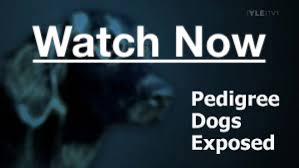So what makes Starstruck Labradors special?
When searching out your next great love on four legs, what do you look for in a breeder? When asked, most people want a healthy puppy from an ethical breeder. No one is perfect, and our dogs are not perfect, but we are committed to always doing everything within our power to raise healthier dogs.
- ALL BREEDING DOGS LIVE AS FAMILY PETS, AND NOT KENNEL DOGS! :)
- OFA tested breeding dogs, most of our mothers and fathers undergo non-invasive radiographic exams with our veterinarian in Didsbury and their x-rays are sent to the OFA for their preliminary (<24 months) or final (>24 months) rating.
- CERF/EYE tested breeding dogs, most of our mothers and fathers have been examined at the CARE Center in Calgary by an Ophthalmologist.
- Lifetime/5-Year genetic warranty on all of our puppies
- DNA tested for PRA, EIC, DM, and CNM
- No inbreeding or "line breeding" (sadly, this is very common)
WE HAVE ETHICAL STANDARDS THAT HAVE BEEN VETTED BY THIRD PARTIES
- Veterinarian inspected
- Humane Society approved (2012)
- Exclusively awarded as Responsible Breeder 2012 (International)
- Improvement breeder 2012-2014 (International)
- HAVE A LISTEN TO OUR OSPCA PAWDCAST - CLICK HERE!
WE LIKE TO GIVE BACK
- Donating to STARS
- Donated to registered service and therapy organizations
- Donating and volunteering with humane societies and animal shelters
- We also enjoy (personally) giving blood and donating red hair to Locks of Love
WE ARE MEMBERS/SUPPORTERS OF THE FOLLOWING GROUPS
- The Canadian Kennel Club
- Calgary Humane Society and The SPCA
- SPAZ (Zihua Humane Society)
Is Starstruck Labradors a registered Kennel name, and what does this mean?
No, 'Starstruck' was a name taken already in the CKC record books, but we would only need to register our kennel name if we wanted to name our dogs after ourselves. Example: "Starstruck's Wonder Pup". Registering a kennel name serves no other purpose. We do have a membership with the CKC, but again, membership in the CKC is not any assurance of quality.
It never fails to amaze us how many people are still under the false pretense that being a member of a posh dog club and owning a "registered kennel" must mean that the breeder is reputable! Truly, all this entails is paying your dues to a club. Canadian law provides for only one kennel club in the country, and it does not conduct inspections, ensure healthy living quarters, or have any way to control how their members treat their dogs. Almost any breeder can be a member of the CKC...it is not that hard - just expensive.
So next time you ask for a reference, and the breeder responds by saying that they the proud members of this club or that, remember that no club can save a puppy from a cruel existence - only you can. Do not support a breeder who would lead you to believe that a membership card is a kennel inspection certificate. Visit the kennel yourself, or do like we did, and have the breeder present an inspection summation from a veterinarian or humane society.
We are one of the ONLY kennels in Canada to have been inspected by a veterinarian AND a humane society!
CLICK HERE to read the report!
English, or American? What does that mean?
(See video above)
Both types of Labrador are registered as purebred Labrador Retrievers, but are vastly different in appearance. We do have both American, and English bloodlines in our breeding program. We have done this purposefully, as the different characteristics of both types can compliment and strengthen the resulting pups while still producing predictable traits. The two types of Lab are usually bred completely independently from one another. This divides the gene pool in half, and creates a greater problem by producing more and more inter-related dogs! By bringing the two types together, we create greater genetic diversity within our breeding program, and produce healthier and stronger dogs, who are still purebred.
"Genetic Diversity
It is important to try to prevent loss of genetic diversity within a breed. If diversity is lost, then this is reflected in a number of parameters, including an increase in the average inbreeding coefficient for the breed.
We know that if the average inbreeding coefficient increases, then the risk of the breed suffering serious consequences also increases. Dog breeders need to manage this risk by managing any loss of genetic diversity and this will involve breeders monitoring the effects that individual litters might have on genetic diversity within the breed."
The above quote was found at http://www.the-kennel-club.org.uk/services/public/mateselect/guide/mating/diversity.aspx
Below is a very interesting documentary that has caused a real stir in the world of purebred dog breeding. It sheds light on the dangerous concept of line-breeding (lightly inbreeding) dogs. For this and many other reasons, we breed both English and American Labradors together - to create a healthier purebred dog!
Why do we breed these two types together?
Click on the link below to learn more about why we choose to breed two dissimilar types of Labrador Retriever together.
We do this for GENETIC DIVERSITY.
PLEASE take the time to watch the above video - BBC Pedigree Dogs Exposed. It will change your outlook on purebred dogs.
Many English and American bred Labradors couldn't be more genetically dissimilar from each other, although they still remain within the same breed. We have included both types in our bloodlines to increase genetic diversity, and breed healthier purebred dogs.
English
bred Labradors have been bred heavily for their looks. The English Lab, also known
as 'Show' type, tends to be short, wide, and can have less energy that other Labs.
They are the beauty pageant kings and queens! In our personal
experience, we have found that in an alarming number of these lines, dogs are line-bred to perpetuate certain characteristics (especially in their appearance).
American bred Labradors have been bred more for their brains and performance. The American Lab, also known as a 'Field' type, is usually tall, lean, and can be extremely energetic. American
Labs were bred to be more like professional athletes! Some can spend hours, tirelessly
retrieving, working, and training at the side of their humans. We have also
found some line breeding in these lines, where the best drive and most
energy is the focus of these pairings. Dogs with the best endurance and ability in the field are bred, while dogs with less drive are taken out of breeding programs.
Unfortunately, the continual removal of dogs from any breeding program results in a lack of unique genetic material, which makes any breed (or population of any species) much poorer as a whole.
In our opinion, the English Lab has become a poor example of the Labrador. Many show champions can not physically keep up with their American cousins, and can have difficulty running for any length of time. Statistically speaking, heavier dogs die sooner than those who are light weight and more agile. English Labs often receive their Champion ribbons for being bigger, thicker, and heavier than their competition.
In our opinion, the American Lab has also become a poor example of the Labrador. Unless you are a professional trainer, with the intentions of working such an energetic dog, these Labs can become destructive when bored. They were bred primarily to hunt and work - not to be house pets. Although these types of Labs are arguably healthier than their thicker English cousins, they can have difficulty settling into the average pet home.
Together, these two types of Labrador
bring us back to the foundation of where the Lab started from. The
Labrador Retriever was of medium build; not too tall, and not too short.
He was capable of retrieving all day, and swimming with fallen sailors for hours, but was
pictured so many times resting at the feet of the men he worked with.
See these links for more information on body type and genetic health.

In addition to the assurances that genetic diversity lends to our breeding program by breeding American lines to English lines, we also test for known genetic diseases that can effect that Labrador Retriever. To read about these tests, CLICK HERE
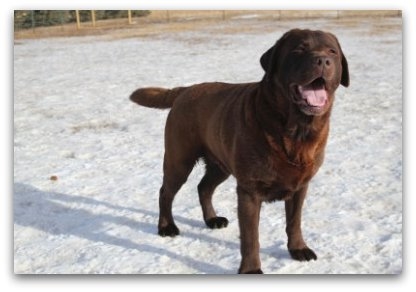
Can I see the pedigree, health clearances, and more pictures of my dog (or my puppy's parents)?
We would love the chance to share our bragging book of the health clearances we have done our our dogs, their parents, and even their grandparents! When visiting our kennel, please ask to see our records!
Pictures are always available upon request. We do not place certain pictures or pedigree and health records on our website as this could attract a great deal of (unwanted) attention from other breeders but we do not sell any breeding rights with our puppies. Our pups are only sold as pets, donated as service dogs, or placed into training programs as working dogs.
Why are your dogs so expensive?
Our overall pricing is about the same as pet stores, who source their puppies from poor quality breeders for very low costs. They then mark-up and re-market these dogs to the same price-point our pups are place at. Usually with no registration, no health testing, no knowledge of where the dog really came from. Certainly no customer screening, and rarely a return policy, or significant health warranty. A the end of the day, if you buy a puppy from a pet store, you are supporting a breeder and retailer who couldn't care less about where that puppy went.
So then, how much is your next family member worth to you, in dollars and cents? If you want the cheapest puppy available, there is no shortage of backyard breeders to choose from. Everyone speaks against puppymills and backyard breeders. But by not visiting a breeder in person, there is a chance that you will support what you stand against. They probably have a nice website with pretty pictures, but how do you know the truth until you see it with your own eyes?
The cheapest expense you will incur over the life of your new family member, will be its purchase price. You can expect your dog to cost between $30,000 - $50,000 over his or her life cycle.
Our prices reflect the enormous amount of time and money that is spent on ETHICALLY operating a breeding kennel. The construction of proper facilities and maintenance of large runs and conditioned space for the dogs involves a lot of resources.
When our dogs and puppies have treatable medical issues, we do not euthanize or let them suffer. What frightens us most is to hear of breeders, professional or not, who are pricing their pups under $1500. It begs the question, "What corners are being cut?"
Diagnostics and DNA health testing runs about $900 per breeding dog, not including their initial purchase price ($4000-$8000), and the ongoing costs, veterinary care, and feeding a quality diet. These are very significant expenses, especially when breeding dogs are retired to their forever homes at a young age. Although there is no such thing as the perfect dog, genetically speaking, there is a way to use the knowledge gained from testing for better breeding practices.
To learn more about just what we test for, please visit our "Genetic Health 101" and "Orthopaedic Health Page" page
What are silver, charcoal, and champagne Labradors, and are they registered as purebred Labradors?
Labrador Retrievers are at the center of a debate now, just like the chocolates were once a hated colour. For a deeper explanation of the dilute colours, please visit our "Colour Controversy" page.
For a quick answer. Yes, we believe our dilute Labradors are purebred, and they are CKC registered, as their parents are also CKC registered, as were their parents before them. There are some breeders who do not like these colours, and we respect their opinions, but we ask that they remain professional in presenting those opinions to us.
Can I visit Starstruck Labradors?
Absolutely! We enjoy meeting you, almost as much as you will enjoy meeting our gang! We do ask that you plan your trip for a nice day, but prepare yourself for windy, rainy, or snowy conditions…this IS Alberta after all…
For the health and safety of our dogs we require that you have first sent in an adoption application, and schedule an appointment with us, before planning your trip. We need to know that you are not bringing viruses, diseases, or bacteria into the kennel. Please be respectful. Puppies are born fragile, and are in danger if we do not keep such things out of our facilities. This means no visiting other breeders, kennels, shelters or playing with puppies in pet stores in the days before your visit. This would put our entire kennel, and especially our puppies, at great risk. So we ask that when you visit, you be kind to our dogs, and respect the rules we have put in place to protect them.
On your visit, you will be meeting our breeding dogs, our growing puppies, and puppies sold or for sale who are eight weeks of age or older. However, you will not be able to meet nursing mothers or their puppies if they aren't yet eight weeks old.
If you have no puppies that fit my timeline, how do I choose another breeder?
First and foremost, ensure you visit your breeder in person whenever possible! You are purchasing your next family member from them, so make sure you take a day to see where your family member will actually be coming from, and make sure you're comfortable with it.
Breeders should be friendly, informative, and very attentive to their clients AND to their dogs! When choosing a breeder, look for signs of good maintenance of the grounds and of the dogs. Breeders who do not allow visitors to see most or all of their dogs are usually hiding something…
You should be able to see where the dogs eat, sleep, play, and poop! You should be able to walk through the kennels without holding your breath, or nose!
The dogs should be curious about you, excited to see you, and generally happy. All dogs should have clear and clean eyes, thick and full coats (unless nursing), trimmed nails, access to fresh water, and should show no signs of aggression toward humans. The breeder should be able to tell you about the unique characteristics of each dog, how many litters he or she has fathered/mothered, and if any of those puppies have had any health or training issues.
A good breeder knows the history of the breed, the importance of genetic components in breeding, and the overall quirks and characteristics of the breed. If your family or lifestyle does not suit this particular breed, a responsible breeder will recommend you look for a more suitable pooch, even though it means losing a customer.
Health testing is a must. You want to find this in the form of OFA/OVC/WCVM certified Hip & Elbow x-rays, as well as CERF eye testing, a basic Cardiac exam, and recessive genetic disease testing. If in doubt, get documentation. General practice veterinarians are usually not qualified to evaluate hip and elbow x-rays, and board certified radiologists are required. DNA testing for certain diseases is a huge plus as well, as many of these problems may kill or incapacitate your pet at a very young age.
The breeder should be willing and eager to help you select a proper diet and quality veterinary care, offer suggestions for training, and assist you in any way necessary to ensure a healthy and happy life for your new pet. A reputable breeder will have you sign a contract or warranty that specifies that you will not subject your new friend to breeding, abuse, under/over feeding and so on. Your buddy should also be welcomed back to the breeder, at any time, in case something goes wrong, so check with the breeder before making a commitment.
*** AND PLEASE find a breeder who has been inspected by a veterinarian and/or an animal welfare group!
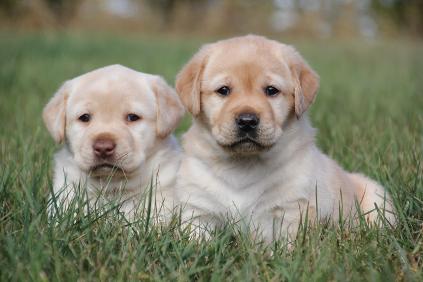

How do deposits work?
The deposit will be credited to the full purchase price of your puppy or dog. Our deposits are non-refundable, but are transferable toward the purchase of any available pups or future litters. We take deposits year-round and usually have a list of dozens of families waiting for unborn pups. If you want one of our pups, it is always best to plan ahead!
We keep one general deposit list, rather than a separate list for each litter. On the list, we make notes based on what temperaments, colours, and genders each family is interested in. :)
When a family places a deposit to get on our waiting list for puppies, that family starts at the bottom of the list. Families who placed deposits earlier are offered pups first, and families who place deposits later will be offered pups afterward. As we place pups into homes, each family moves up the deposit list.
As we have litters born, we send out litter updates with information and photos of each litter to all families on the list. From there, we start contacting families individually to place a pup with them if he/she fits their colour/gender preferences, and if the litter is suitable for that particular family based on the pups' expected energy level.
We encourage families to choose suitable litters that would be a good fit though, rather than trying to choose a pup from any given litter though. Especially within a purebred breed, pups from within the same litter tend to be quite similar to each other, but pups from different litters can vary much more dramatically.
We usually have between 30-60 families on our deposit list at any given time. This is why we recommend that you place a deposit with us at least 6 months before you are ready to bring home your new furry family member! If you are lucky, pups are available sooner than 6 months, but that depends on a lot of variables.
Exactly when we are able to offer your family a pup depends on our breeding plans for a given season, and on your flexibility on colour & gender. :)
If you want to skip the list, and the wait, ask about our Guardian Program!
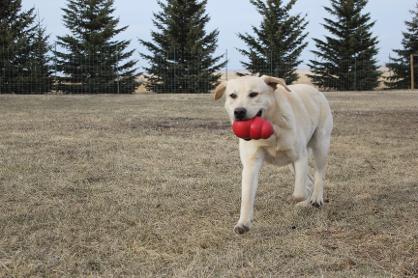
When and how can I pick my puppy?
We encourage visits with your puppy as soon as he/she is robust enough. For the protection and safety of your new family member, we do not allow visiting the new litter until the pups are six to eight weeks of age. By this time, your puppy has been vaccinated once and his or her mother is more settled and has had a chance to recover and adjust to her new litter.
For our clients who live a greater distance away, we will do all that we can in helping you select the best pup for you. We can send photos and our recommendations with regard to personality and trainability.
Starstruck Labradors places a lot more emphasis on our families choosing a suitable litter, rather than attempting to choose a suitable puppy from a breeder’s given litter.
As a result, we don’t place a lot of import on picking a specific pup. But at the moment, we still abide by the common “picking protocol” that is the standard among most breeders. :) This means that the older your family’s deposit, the better the choice of a specific colour & gender of pup you will have in your chosen litter.
Temperament and energy level have genetic components, but they are also heavily environmentally influenced. The environment provided to pups by their mother and their breeder during the first ~8 weeks of life is of incredible importance and can’t be understated.
But neither can the environmental impact that each pup’s new home provides. In this regard, a calm pup placed with a family with hyperactive children and poor training, will tend to result in a very energetic and unsettled dog. Similarly, an energetic pup placed with a family with calm energy and discipline, tends to mature into a very content canine citizen. ;)
While our litters do vary in temperament and conformation, we usually aim for pups who are ~60% English and ~40% American genetics. Because we strive to create a balanced labrador with a diverse gene pool, most of our litters are very suitable for most families who want well-rounded companions.
if you have specific needs regarding energy level, please let us know and we may be able to suggest the most appropriate breedings or refer you to another breeder. But keep in mind that temperament is as dependent on environment as it is on genetics. And as your pup’s new family, most of your dog’s environment will be your responsibility.
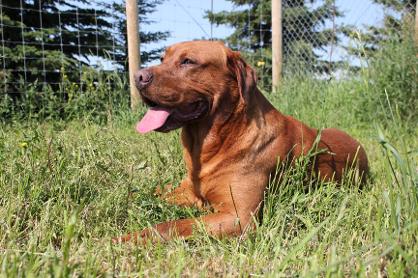
What is included with my new puppy?
We send our pups home with a good foundation for basic housetraining. Our pups have access to the indoors and outdoors from a young age, and are always given the choice to do their "business" in the right spot! Dogs, by nature will not mess in their dens, unless they have no other choice. Many breeders keep their pups indoors, or even in their whelping boxes until they go home, with no choice but to "go" in their bed! This sets up any dog for difficult potty training. Our pups are usually clean inside for 2-4 weeks before they go home, so they already know that their "duties" are to be done outside! Our pups have all been introduced to plastic kennels for easy crate training.
Our puppies are microchipped, dewormed four times, and have their first vaccination for Canine Distemper and Canine Parvovirus.
A complimentary trial of pet insurance is also included. This insurance covers emergency accidents and illness for your new family member!
We are also very happy to offer a lifetime of breeder support - from torn toenails, training, to health advice and pointers, we will be there every step of the way! We are not experts in all fields, but we can help in many ways, and if we don't know, we can point you in the right direction!
When can my puppy come home?
We allow our puppies to go to their new homes on the weekend after they turn 8 weeks of age. Before they go home they must be vaccinated, they are completely weened on to a raw food diet, and they must be using the dog door without messing inside.
At eight weeks of age, pups can also travel by air. If you are hoping to travel with your pup in the cabin, you will have to schedule this as close to the eight week mark as possible. Our pups are often 15-20 lbs by the time they are ready for their new homes, and in-cabin travel has a lot of weight & size restrictions!
What if I live far away from Starstruck? Do you ship puppies or dogs?
We have sent puppies to their new homes via air and land, without meeting their new families, but we do not allow our pups to homes that we feel are unsuitable. Therefore, the only difficulty in purchasing a puppy from us at a distance, is to build mutual trust from a distance! Don't worry, we won't send private detectives to stalk you, but we will be extra cautious, and ask questions beyond our regular adoption application.
Puppies have been sent safely via Air Canada, Westjet, and Continental Airlines - both in live cargo and in cabin! If at all possible, we prefer a pup to fly in cabin, with a human passenger. If you would like your puppy shipped to you, please make a note of this in your adoption application. This will help us check to make sure that we can ensure your pup's safe arrival at his or her new home!
What do I feed my new dog?
We spent years researching this very question. First and foremost, we strongly recommend a raw food diet! Sadly, many veterinarians stand against the raw food diet for dogs, but thankfully, mother nature has put the proof in the pudding! We feed all of our adult dogs a high quality raw food diet, composed of chicken, beef, and some organ meats, veggies, fruits, and other supplements. Since making the switch from kibble, we have seen our vet bills plummet! If you are interested in trying a raw food diet to see the changes in your own dog, please contact us.
Aside from a natural raw diet, we know that only certain dry kibble products meet the nutritional requirements necessary to support a lab’s overall health and well being.
For those families who prefer to feed a kibble-based diet, we recommend a kibble called TLC, which is primarily chicken and lamb based. This product is delivered direct to your door, at no extra charge.TLC is an excellent kibble, and you can read more about it on the Purchasing Information page.
Raw food is raw food! That is right, no cooking, no preservatives ... just raw, real food!
We purchase our raw food from Pets Go Raw, in British Columbia, Canada. They make a pre-made, fully balanced raw meal in various types; Chicken, Beef, and so on. We also resell their food in the bulk formats that we use ourselves! (These formats are very suitable for labs, but perhaps not for chihuahuas!)
If you want to make your own food ( which is usually more expensive anyhow, unless you own a butcher shop), you have to keep in mind what a dog needs in their diet. There are two groups of nutrients you have to consider; the Macro-nutrients and the Micro-nutrients.
Macronutrients are required in large quantities, like protein, whereas Micronutrients are required in very small quantities, like vitamins.
Macro-nutrients: the nutrients that make up 90-95% of the dog's dietary needs.
1) Protein - Chicken, Beef, Bison, Lamb, Salmon .... whatever!
2) Fat - Usually fat from the same source as the meat, but do not mistake meat for fat .... chicken, for example, has very little fat in the meat.
3) Fiber - Veggies and Fruit. Here is a good article about veggies and fruit for dogs http://animals.howstuffworks.com/pets/10-fruits-veggies-aid-dog-nutrition.htm
Micro-nutrients: The nutrients that make up no more than 10% of the dog's dietary needs.
1) Vitamins - Vit A, Vit D, Vit, E, Vit K, Vit B1-2-3-5-6-12, Vit C, and Folic Acid
2) Minerals - Calcium, Phoshorus, Sodium, Potassium, Cloride, Magnesium, Iron, Iodine, Copper, Zinc, Manganese, and Selenium.
Now, keep in mind, if you are feeding adequate amounts of fruit and veggies, you will not have to really worry about the vitamins and minerals, however, no one ever died from taking a multivitamin complex either. So we give vitamins to the dogs a few times a week.
There are also a few things you should never feed to a dog, like grapes/raisins, coco, and macadamia nuts. These foods produce toxins in the dog's body and can kill a dog.
You should also NEVER pay for raw food that contains grains. Dogs can only digest 2% of grain-based carbohydrate, and the rest just gets pooped out! Grain can be used to assist a dog overcome a bout of diarrhea, but should never be considered a significant part of a permanent diet for a Canid!
Also, DON'T LEAVE OUT THE BONE! The bones of the animal were meant to be eaten by the carnivores. The large, raw bones will help to keep your pet's teeth clean, and it can keep him pretty busy too! The chewing and gnawing that bones require to be broken up are very therapeutic for dogs. Remember, our dogs are still 99.8% Grey Wolf, and they need to fulfill their wolf-like habits in one way or another.
Then there are a few things that you should use very sparingly, if at all. These ingredients include potato, rhubarb, tomato leaves, onions, garlic, and raw eggs. These foods, when fed regularly, prevent the absorption of essential nutrients, causing serious problems, even death. However, we do use raw eggs, fish, and garlic in our food mix twice a month as these three items can only cause harm if they are fed in great amounts, on a regular bases. Otherwise, fish, egg and garlic have many more dietary benefits that can not be forgotten.
The average growing lab will need between 1-3 pounds of a lean meat (like chicken) and 1-3 pounds of a fatty meat (like beef) per day. If you want to start in on raw when a pup is only eight weeks old, you will have to break this into a few meals. By adulthood, they may actually need less than they did as puppies, but meals should still be broken into two, ideally. Some raw food manufacturers claim that there is a magic ratio or percentage that a dog should consume, based on its own body weight ... but please do not take these numbers as the end all and be all of guidelines! Often times, we have to increase and decrease a dog's intake daily. It depends greatly on what the dog or puppy has been doing in the last day, or how fast your puppy is growing. If you have a very active puppy, then you will have to feed twice as much than compared to a lazy adult! So DO NOT BE AFRAID to play around with the amount, or even type, of food fed every day.
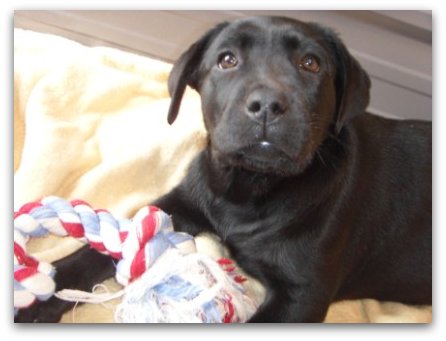

When should I spay or neuter my dog?
If it is so healthy, why don't they offer this as an option for humans? We very strongly believe that spaying, neutering, or any major surgery should be avoided until your furry friend has finished growing. For some dogs, this can take up to three years, but most growth is finished around two years.
What many people do not realize is that when a male is neutered, his testes are completely removed, and this completely stops him from being able to produce testosterone! Why do men look like men, and boys look like boys ... it is all hormones! How can we expect our male dogs to grow up healthy and mature to their full potential when we take away the fuel? Training a male not to lift his leg in the house is the same challenge as teaching him not to bark in the house, and just as possible. In the world of competitive dog showing, ALL of the dogs must be intact, and are trained to behave.
When spaying a female, the uterus is completely removed, the ovaries are taken out, and the intestines are sometimes rearranged! When humans have to undergo this type of procedure, there is great concern, and hormonal replacement treatments are often undertaken, or menopause occurs prematurely. Estrogen is needed to build healthy bones, so why take that away from a young female who is not finished growing yet?
So why do vets push so hard for spaying and neutering at such a young age? We think there is a two-fold answer.
First and foremost, there is a perceived animal control problem. What that really means, is there is a people control problem. Pet ownership is about responsibility, and not allowing your pet to breed. The veterinarian community has given up hope that individual people are responsible enough to control and care for an intact dog.
We believe that blanket spaying/neutering is a good social policy in any country to prevent animal overpopulation...but that doesn't mean it is good or healthy for the dogs receiving the procedures. Rule #1 of pet ownership is: Be Responsible.
At least, that is our take. For another perspective on the matter, READ THIS!
Which vet do you recommend?
Choosing a vet is as difficult as selecting your family practitioner! Although we do not have a list of “good” veterinarians (other than our own vets at Didsbury Veterinary Services), we can offer pointers to select a good one in your area.
1) Begin interviews…before you get Fido! Yes, really. Imagine going to the vet without an animal in tow! If the Doctor has no creature to focus on, then you become the center of the interview. This is important because your new puppy will not be able to speak to the doctor, and you will have to be able to do that for him. If you and your pet’s physician can not see eye to eye in a simple interview, how then will the relationship withstand a time of crisis?
2) As a personal observation, we have found that vets who treat large animals, like horses and cows, are generally less expensive, and more practical and grounded. We are terribly saddened to hear tales of old and sick animals whose lives are unfairly prolonged. We feel that vets who also work with large animals often have a better perspective in this regard, and are therefore more realistic when it comes to minor, chronic, and acute concerns. Most of these vets will be found just outside of urban centers.
3) And finally, if during the life of your pet, a vet recommends a procedure over $500, get a second opinion! There are as many different answers to a question as there are vets to ask. When in doubt, consult an educated third party. Feel free to give us a call if you'd like, and we can share our experience.

